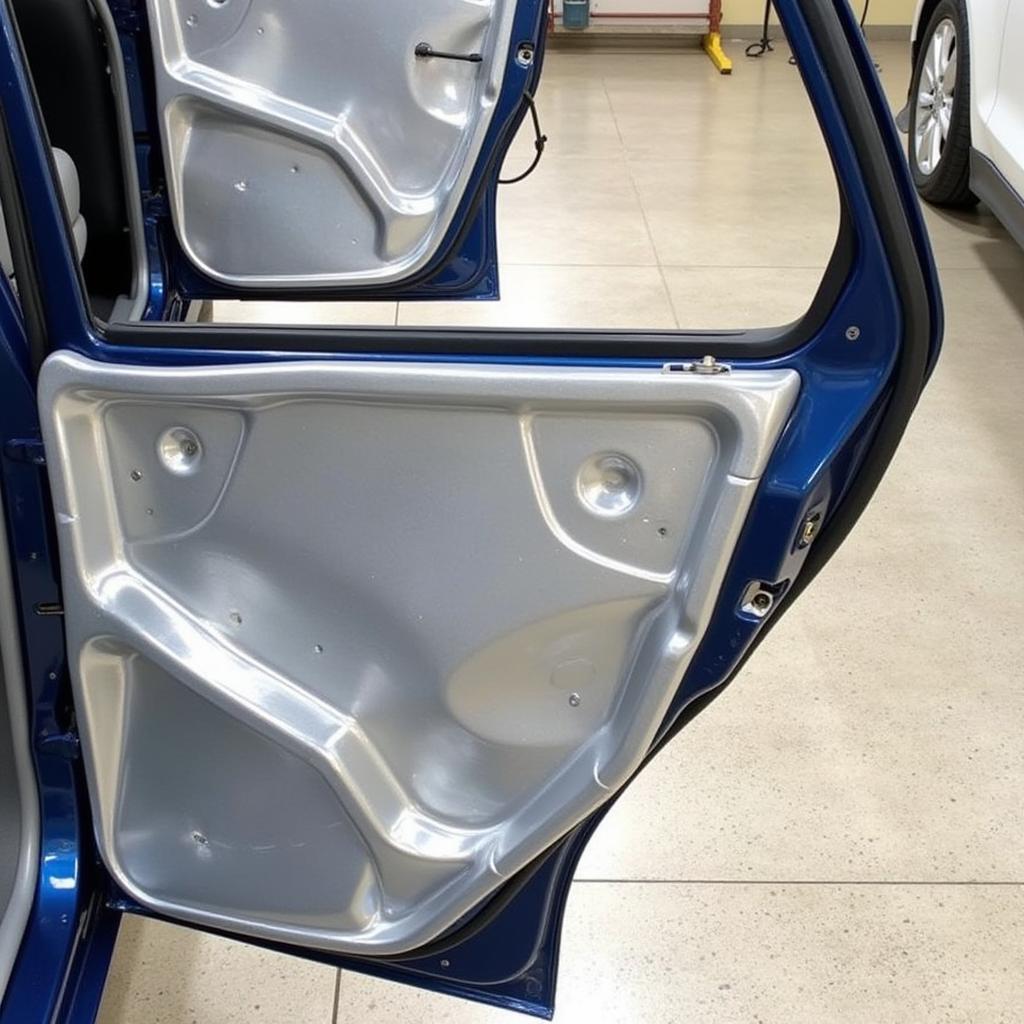Paraffin wax car repair is a popular method used to address various automotive issues, particularly rust and corrosion. This article will delve into the applications of paraffin wax in car repair, its advantages and disadvantages, and provide a step-by-step guide on how to apply it effectively.
Understanding the Role of Paraffin Wax in Car Repair
Paraffin wax is a versatile substance derived from petroleum. Its hydrophobic nature, meaning it repels water, makes it an excellent protectant against moisture, a primary culprit in rust formation. It’s relatively inexpensive, easy to apply, and offers a reasonable level of protection, making it a favored choice among car enthusiasts and professionals alike. The wax creates a barrier, effectively sealing the metal surface and preventing water and oxygen from reaching it, thus inhibiting the oxidation process that leads to rust.
Common Applications of Paraffin Wax in Auto Repair
Paraffin wax is primarily used for rustproofing and undercoating. It’s particularly effective in treating internal cavities of vehicles, such as door panels, rocker panels, and frame rails, where moisture tends to accumulate. It can also be used to protect exposed metal surfaces on the undercarriage, shielding them from road salt, water, and other corrosive elements. However, it’s important to note that paraffin wax is not a permanent solution and requires reapplication periodically to maintain its protective properties.
 Paraffin Wax Application on Car Undercarriage
Paraffin Wax Application on Car Undercarriage
Advantages and Disadvantages of Using Paraffin Wax
Like any other car repair method, paraffin wax has its pros and cons. Understanding these will help you make an informed decision about whether it’s the right solution for your vehicle’s needs.
Advantages of Paraffin Wax
- Cost-effective: Paraffin wax is relatively inexpensive compared to other rustproofing methods.
- Easy Application: The application process is relatively simple and can be done with basic tools.
- Effective Moisture Barrier: Provides a robust barrier against moisture, the primary cause of rust.
- Penetrates Hard-to-Reach Areas: Its liquid form allows it to seep into crevices and cavities, providing comprehensive protection.
Disadvantages of Paraffin Wax
- Not a Permanent Solution: Requires reapplication every few years, depending on environmental conditions.
- Can Be Messy: Application can be messy if not done carefully.
- May Not Be Suitable for All Surfaces: Not recommended for surfaces exposed to high temperatures.
- Can Trap Existing Rust: If applied over existing rust, it can trap moisture and accelerate corrosion.
 Paraffin Wax Rust Prevention Inside Car Door
Paraffin Wax Rust Prevention Inside Car Door
How to Apply Paraffin Wax for Car Repair
Proper application is crucial for maximizing the effectiveness of paraffin wax. Here’s a step-by-step guide:
- Prepare the Surface: Thoroughly clean and dry the area to be treated. Remove any existing rust and loose paint.
- Heat the Wax: Heat the paraffin wax until it melts into a liquid state, following manufacturer instructions.
- Apply the Wax: Apply the melted wax using a spray gun, brush, or roller, ensuring even coverage.
- Allow to Dry: Let the wax dry and harden completely. This usually takes a few hours.
- Inspect and Reapply: Periodically inspect the treated area and reapply the wax as needed.
Choosing the Right Paraffin Wax
Not all paraffin waxes are created equal. Consider the following factors when selecting a product:
- Purity: Opt for high-purity paraffin wax for better performance and longevity.
- Melting Point: Choose a wax with a melting point suitable for your application method.
- Additives: Some waxes contain additives that enhance their protective properties.
 Applying Paraffin Wax with Spray Gun
Applying Paraffin Wax with Spray Gun
Conclusion
Paraffin wax car repair offers a practical and affordable solution for protecting your vehicle against rust and corrosion. While it’s not a permanent fix, its ease of application and effectiveness make it a worthwhile investment for extending the life of your car. By understanding the advantages, disadvantages, and proper application techniques, you can effectively utilize paraffin wax to keep your vehicle rust-free.
FAQs
- How often should I reapply paraffin wax? Typically, reapplication is recommended every 2-3 years.
- Can I apply paraffin wax over existing rust? It’s not recommended as it can trap moisture and worsen the rust.
- Is paraffin wax safe for all car parts? Avoid applying it to areas exposed to high heat, such as exhaust systems.
- What type of paraffin wax is best for car repair? High-purity paraffin wax is ideal.
- Can I apply paraffin wax myself? Yes, with the right tools and preparation, it can be a DIY project.
- How long does it take for paraffin wax to dry? Usually, a few hours are sufficient for the wax to harden.
- Where can I buy paraffin wax for car repair? Automotive stores and online retailers typically carry it.
Need assistance with your car diagnostic needs? Contact us via WhatsApp: +1(641)206-8880, Email: [email protected] or visit us at 276 Reock St, City of Orange, NJ 07050, United States. Our customer service team is available 24/7.


